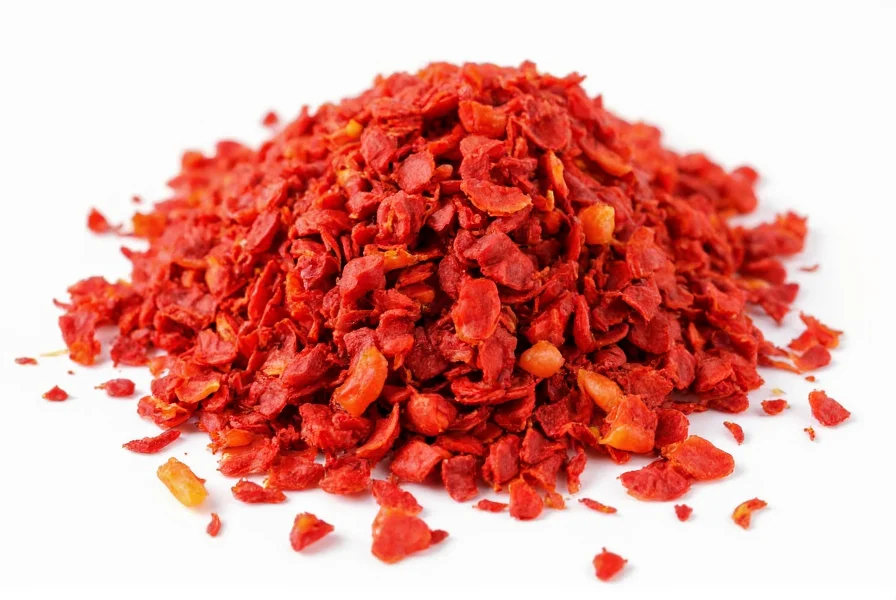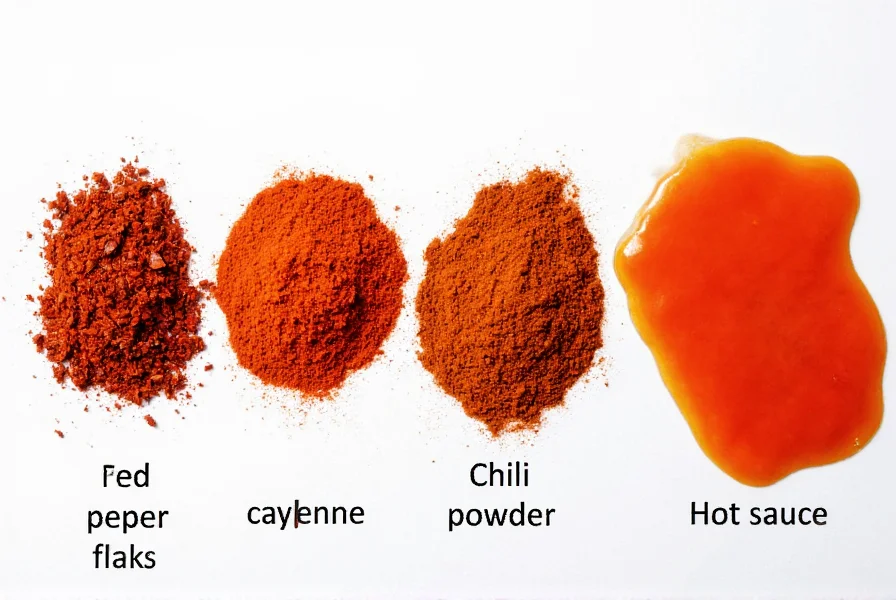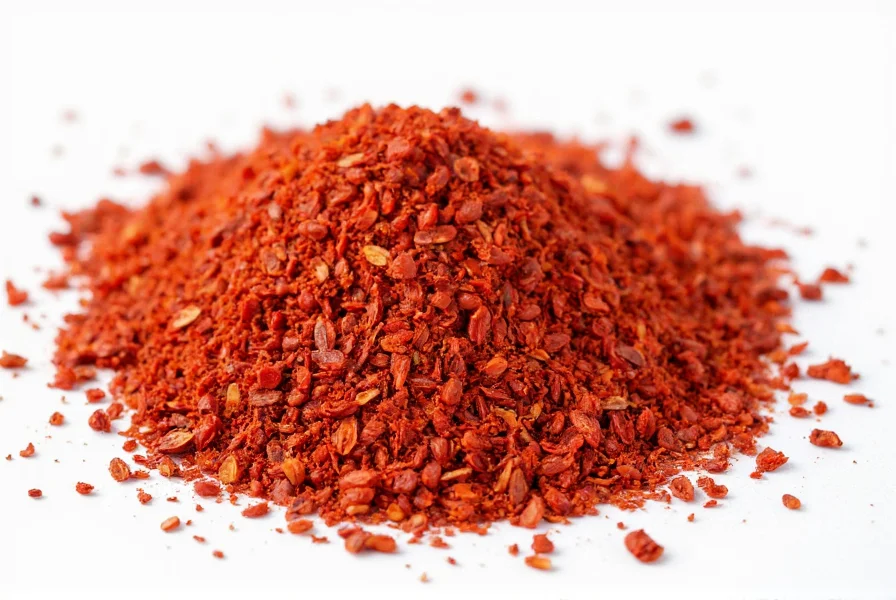Understanding red flakes pepper goes beyond simply recognizing it as a spicy condiment. This kitchen staple has nuanced characteristics that make it indispensable for home cooks and professional chefs alike. Unlike pre-ground spices that lose potency quickly, quality red pepper flakes maintain their vibrant flavor and heat when properly stored, making them a reliable pantry essential.
What Exactly Are Red Flakes Pepper?
Red flakes pepper consists of dried, crushed chili peppers—most commonly cayenne peppers, though some blends include other varieties like serrano or jalapeño. The flakes contain a mixture of crushed pepper skin, seeds, and sometimes small pieces of stem. The seeds contribute significant heat, while the skin provides more complex flavor notes.
When examining high-quality red pepper flakes, you'll notice variation in color from bright red to deeper burgundy tones, indicating different stages of ripeness and drying. The best products maintain visible flake structure rather than being completely pulverized into powder.
Production Process and Quality Indicators
The journey from fresh chili to red pepper flakes involves careful harvesting, drying, and crushing. Premium red flakes pepper comes from peppers harvested at peak ripeness, then air-dried slowly to preserve flavor compounds. Mechanical crushing follows, with quality control to maintain consistent flake size.
When selecting red pepper flakes, look for products with:
- Visible variation in flake size (not uniformly powdery)
- Bright red color (dull or brownish indicates age)
- No visible moisture or clumping
- Aroma that's pungent but not musty
| Characteristic | High-Quality Red Flakes | Lower-Quality Product |
|---|---|---|
| Color | Bright to deep red | Dull, brownish, or faded |
| Texture | Visible flakes and seeds | Uniform powder, no texture |
| Aroma | Sharp, clean chili scent | Musty or faint smell |
| Heat Level | Consistent medium to hot | Inconsistent or weak heat |
Flavor Profile and Heat Characteristics
Red flakes pepper delivers a distinctive heat profile that differs from other chili products. The heat builds gradually rather than hitting immediately like some fresh chilies. This makes it ideal for dishes where you want consistent warmth throughout rather than a sudden spicy punch.
The flavor complexity comes from several factors:
- Fruitiness: High-quality flakes retain subtle sweet notes from the peppers
- Earthy undertones: Particularly in darker red varieties
- Heat progression: Initial mild warmth building to medium heat
- Finish: Clean aftertaste without chemical bitterness
When using red pepper flakes in cooking, remember that the seeds contain most of the capsaicin (the compound responsible for heat). For milder flavor, you can sift out some seeds. For maximum heat, include all components.
Practical Culinary Applications
Understanding how to use red pepper flakes effectively separates novice cooks from seasoned kitchen professionals. Unlike pre-mixed spice blends, red flakes pepper offers precise control over heat levels in your cooking.
For optimal flavor development, consider these techniques:
- Bloom in oil: Add flakes to hot oil for 30-60 seconds before adding other ingredients to release essential oils and mellow the raw heat
- Finishing touch: Sprinkle on finished dishes like pizza or pasta for fresh, vibrant heat
- Infused oils: Create custom spicy oils by steeping flakes in olive oil
- Marinades: Incorporate into meat or vegetable marinades for deep flavor penetration

Red Flakes Pepper vs. Similar Products
Many home cooks confuse red pepper flakes with other chili products, but understanding the differences ensures you use the right ingredient for your recipe.
- Crushed red pepper: Often used interchangeably with red pepper flakes, though some brands may process it slightly differently
- Chili powder: A blend that typically includes ground chilies plus cumin, garlic powder, and other spices
- Cayenne pepper: Usually a fine powder made from pure cayenne peppers
- Hot sauce: Liquid form with vinegar base, different flavor profile and consistency
When a recipe specifically calls for red pepper flakes, substituting with chili powder will alter both flavor and heat level significantly. For authentic results, use the specified ingredient.
Storage Best Practices for Maximum Freshness
Proper storage dramatically extends the shelf life and maintains the quality of red pepper flakes. Exposure to light, air, and moisture degrades both flavor and heat over time.
Follow these storage guidelines:
- Keep in an airtight container away from direct light
- Store in a cool, dark place (not next to the stove or oven)
- Refrigeration extends freshness for long-term storage
- Check for freshness by aroma—faded scent indicates diminished quality
Well-stored red pepper flakes maintain optimal quality for 1-2 years. While they won't spoil, their flavor and heat diminish over time. For best results, purchase smaller quantities more frequently rather than stocking up on large containers.
Effective Substitutions When You're Out
Running out of red pepper flakes doesn't have to ruin your meal. Several alternatives work in a pinch, though each brings slightly different characteristics to your dish.
- Crushed red pepper: Essentially the same product with minimal differences
- Cayenne pepper powder: Use 1/2 to 2/3 the amount as flakes (more potent)
- Hot paprika: Milder option with similar color but less heat
- Chili garlic sauce: For liquid-based dishes, use sparingly for similar heat profile

When substituting, remember that dried spices are more concentrated than fresh chilies. As a general rule, 1/4 teaspoon of red pepper flakes equals approximately one small fresh chili. Always add gradually and taste as you go to achieve your desired heat level.
Nutritional Profile and Potential Health Benefits
Beyond their culinary uses, red flakes pepper offers several nutritional benefits. Capsaicin, the compound responsible for their heat, has been studied for various health effects.
Per teaspoon (about 2g) of red pepper flakes:
- Calories: 6
- Vitamin A: 15% of daily value
- Vitamin C: 6% of daily value
- Iron: 4% of daily value
- Fiber: 0.5g
Research suggests capsaicin may support metabolism, provide pain relief, and have anti-inflammatory properties. However, these effects typically require consumption beyond typical culinary amounts. The primary value remains their flavor contribution to healthy, balanced diets.











 浙公网安备
33010002000092号
浙公网安备
33010002000092号 浙B2-20120091-4
浙B2-20120091-4